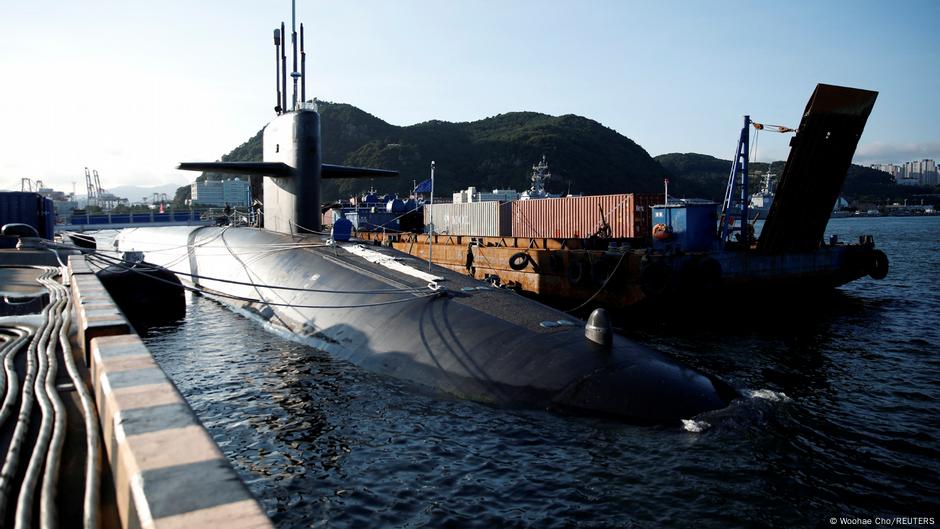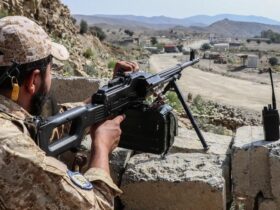With the US eager to redefine the terms of its alliances in Asia, President Donald Trump last week publicly endorsed South Korea’s idea of building and operating nuclear-powered submarines, and said the first ships would be built in the US.
“South Korea will build its own nuclear-powered submarine at a Philadelphia shipyard,” Trump wrote on his Truth social platform.
Seoul immediately praised the decision – South Korean Defense Minister Ahn Gyu-baek said at a parliamentary meeting the same day that the nuclear-powered submarine would have “huge” military significance.
South Korea currently operates conventional submarines, which are powered by a combination of diesel and electricity. But nuclear-powered ships would offer better speed and endurance to counter North Korea’s capabilities, according to Ahn.
And while Pyongyang has yet to comment officially, analysts say it is likely that Kim Jong Un’s regime is bound to respond angrily and will almost certainly announce military countermeasures of its own to the South’s submarine switch.
South Korea may launch ‘nuclear attack’ in arms race
Experts warn that North and South Korea are rapidly increasing their arms race, and other countries in Northeast Asia are also increasing defense spending.
“I don’t think there’s any doubt: We’re already in an arms race,” said Andrei Lankov, a professor of history and international relations at Kookmin University in Seoul.
“There is growing fear among allies in the region about America’s security commitment,” he told DW.
“Trump never tires of saying that his parasitic allies, meaning South Korea and Japan, have had enough, and he can announce at any time that America is going to pack up and leave.”
“For both countries, this would be a real threat, but especially for South Korea, a nuclear-armed foe that has launched attacks across its border several times in the past,” Lankov said.
“So it’s natural that Seoul is going to dramatically increase its military capability and possibly become nuclear capable,” he said.
The second factor, Lankov said, is North Korea’s “extremely rapid” military development over the past decade, which has seen the regime acquire solid-fuel intercontinental ballistic missiles and expand its arsenal of nuclear weapons.
More recently, that military leap has been facilitated by Russia. It is widely believed that Moscow is supplying Pyongyang with the small reactors it needs to power its planned nuclear-powered submarines.
The third indispensable factor is the armament of China, which is making huge efforts to expand its armed forces and equip them with the most advanced military systems available.
Pyongyang showed strength before Trump’s visit
“China wants to re-establish its previous role as the dominant power in East Asia that no one else is able to challenge,” Lankov said.
At the same time, according to Lankov, the US is increasingly looking toward “isolation” from the region, which is a serious challenge, even if some US troops remain on the Korean Peninsula.
Furthermore, any threat to South Korea is made more serious by Pyongyang’s deep alliance with Russia and long-standing understanding with China.
These alliances also allow Pyongyang to be more aggressive.
The regime said it had tested a hypersonic missile the week before Trump arrived in South Korea ahead of the Asia-Pacific Economic Cooperation (APEC) forum on November 1 and had also fired a battery of cruise missiles near his arrival.
Pyongyang also conducted missile and artillery launches this Monday, the same day that US Defense Secretary Pete Hegseth visited the demilitarized zone.
Taipei, Tokyo invest more in weapons
Elsewhere in the region, China is conducting sea trials of its third aircraft carrier, Fujian, while also increasingly testing the air and sea defenses of both Japan – around the Okinawa islands – and the Philippines in the South China Sea.
Beijing also has long-term ambitions to gain control over Taiwan, which it views as a separate province. Taipei has been increasing its military spending, notably through the purchase of 66 F16V fighters and glide bombs from the US.
Japan has also begun a significant defense buildup, investing heavily in maritime and air assets as well as advanced new missiles, a large submarine force, and maritime and aerial drones.
Japanese Prime Minister Sanae Takachi told Trump during their meeting in Tokyo late last month that Japan is increasing defense spending from 1% of gross domestic product to 2% by the start of the next fiscal year, which starts on April 1.
Japan has also signed a deal to provide 11 Mogami-class frigates to Australia and is in talks with the New Zealand government about another deal for frigates.
Also, Tokyo has agreed to provide coastal patrol aircraft and advanced radar systems to the Philippines to help Manila’s military better monitor Chinese ships operating in disputed waters in the South China Sea.
The time of relative peace is coming to an end
Dan Pinkston, a professor of international relations at Troy University’s Seoul campus, said Asian countries have enjoyed relative peace for decades, but that peace is now coming to an end.
Pinkston told DW that many East Asian countries have developed economically and now have enough money to invest in their militaries.
Pinkston also warned that regardless of Seoul’s support for the Nuclear Non-Proliferation Treaty, purchasing nuclear-powered submarines could be a step toward South Korea acquiring nuclear weapons.
“Under Trump we can never be sure about the details of the agreements he makes or what he’s going to propose next,” Pinkston said, citing the U.S. president’s unexpected support regarding South Korea and nuclear-powered submarines.
“But after that, will South Korea do everything on its own?” he asked.
He said, “They are planning to buy enriched uranium from the US for the reactors, but South Korea has its own reactors and can do their own fuel enrichment. And why stop there because the next step is to develop their own nuclear weapons.”
“If the plan is to put missiles with conventional warheads on these submarines, it is not a big step to design a nuclear weapon, it just means that Seoul decides its needs outweigh its own security,” he said. “This is a capacity we are already approaching,” he said.
Edited by: Darko Janjevic






Leave a Reply